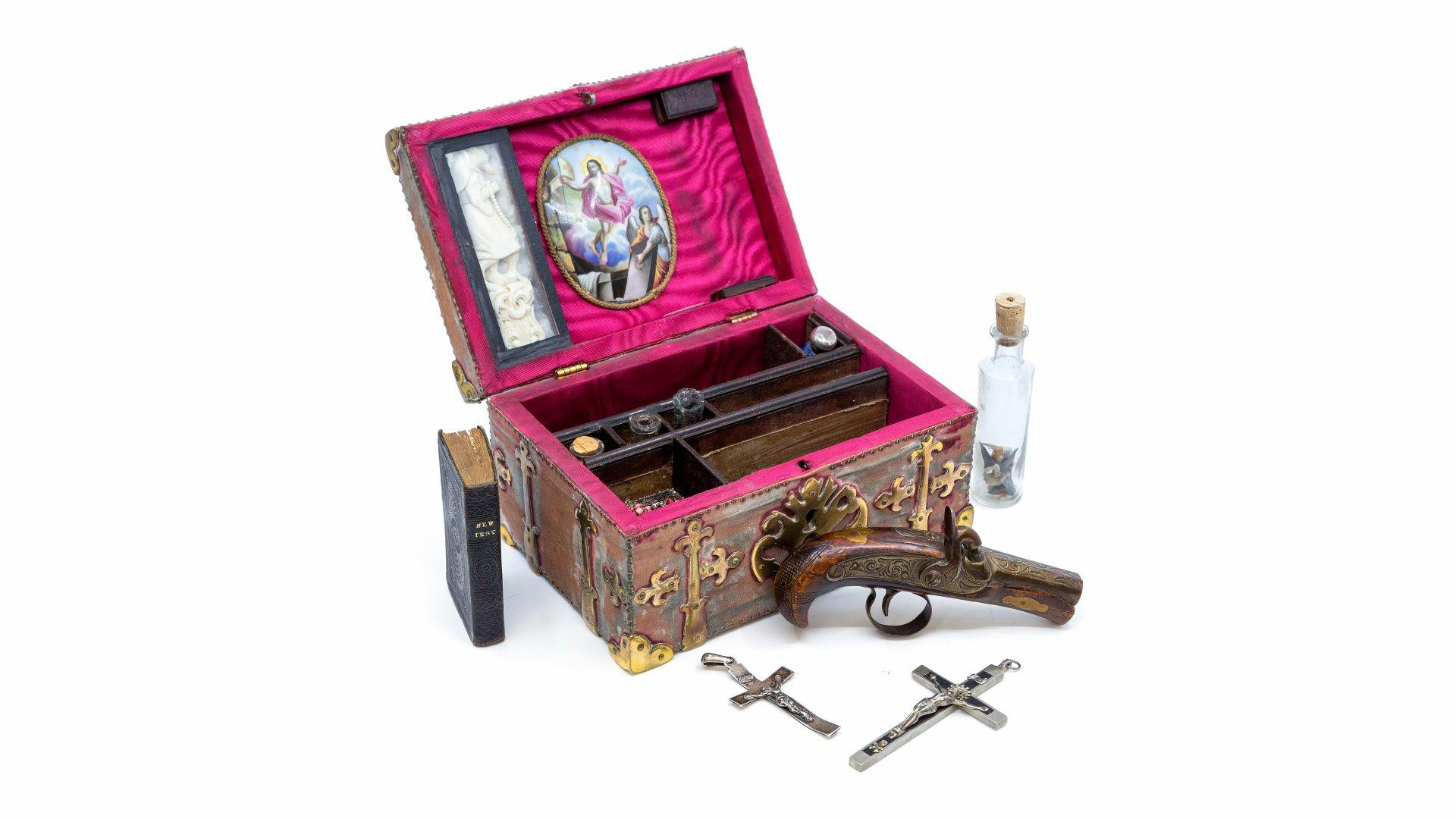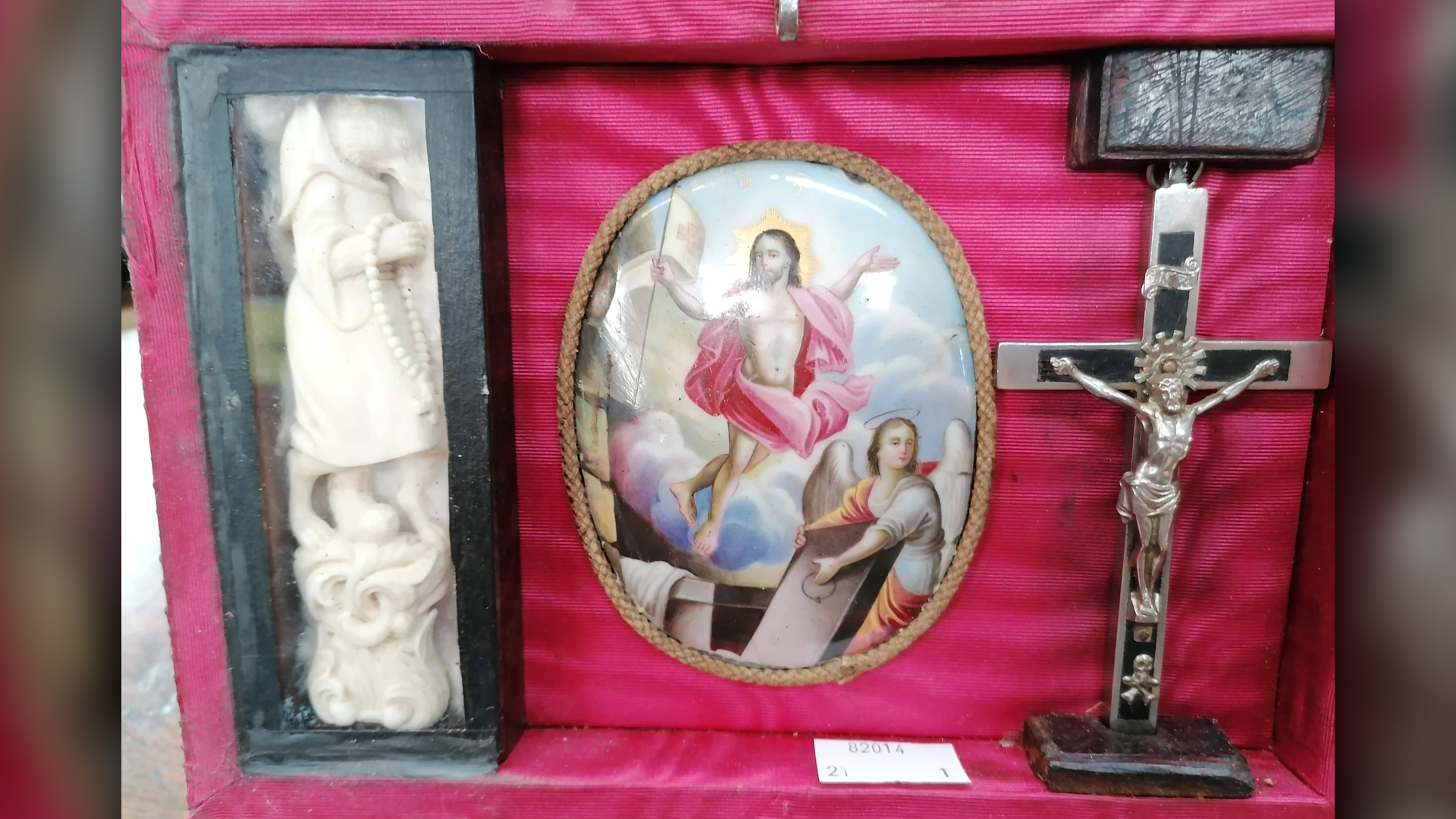Antique vampire-slaying kit up for auction. Bible, crucifix and pistol included.
When vampires come calling, it's important to be prepared
An antique, brass-trimmed wooden box holds all the tools that you might require in order to slay a vampire, including a 19th-century bible, crucifixes and a pistol.
This "vampire-slaying kit" is estimated to be worth about $2,500 to $3,700 (£2,000 to £3,000) according to Hansons Auctioneers in Derbyshire, England, which is taking bids on the box beginning July 21.
Lined with crimson silk, the inside of the lid is decorated with an oval enamel painting showing Christ's resurrection. Next to that painting is an ivory carving of a wolf wearing a hooded robe and carrying rosary beads (though it is uncertain if the contents of the box are also suitable for dispatching werewolves, as the auction listing only mentions vampires).
Related: 7 strange ways humans act like vampires

Inside the box are eight compartments holding: a copy of the New Testament published in 1842; a knife with a silver blade; a percussion cap pocket pistol; pliers, crucifixes and rosary beads; a vial with a metal lid — "contents unknown;" and a small bottle containing sharks' teeth, according to the listing.
Vampire folklore and the belief in vampires can be traced to the ancient world. Indeed, burials dating to more than 1,000 years ago in Europe took safeguards to protect the living against the restless undead, with suspected vampires buried with stones in their mouths or pinned in place with rocks or iron bars.

For people who believed in creatures that rose from the grave to drink blood, "the task of killing a vampire was extremely serious and historical accounts suggested the need for particular methods and tools," Charles Hanson, owner of Hansons Auctioneers, said in a statement.
Sign up for the Live Science daily newsletter now
Get the world’s most fascinating discoveries delivered straight to your inbox.
However, alleged "vampires" were usually identified as such because people did not understand how infectious diseases spread, or because they misinterpreted a corpse's appearance during natural decomposition, Live Science previously reported.
As for the age and origins of this vampire-slaying kit — not to mention any indication that it was ever used to hunt and kill vampires — its current owner purchased it three years ago at an antiques fair in Newark-on-Trent in Nottinghamshire, England, and knows "very little of its history," the owner told the auction house.
"I loved the look of the Gothic box and, when I opened it, I just had to have it," said the owner, who lives in West Midlands in the U.K. and declined to be named. "I thought it was so interesting — a great conversation piece."
The kit is part of an online auction of antiques and collectibles offered by Hansons Auctioneers, beginning on July 16. Other items include: 19th-century silver tableware, trays and cups; compacts and snuff boxes; and jewelry such as brooches, lockets and rings — though only the vampire box is described as an object of "supernatural interest," according to the auction website.
Originally published on Live Science.

Mindy Weisberger is an editor at Scholastic and a former Live Science channel editor and senior writer. She has reported on general science, covering climate change, paleontology, biology and space. Mindy studied film at Columbia University; prior to Live Science she produced, wrote and directed media for the American Museum of Natural History in New York City. Her videos about dinosaurs, astrophysics, biodiversity and evolution appear in museums and science centers worldwide, earning awards such as the CINE Golden Eagle and the Communicator Award of Excellence. Her writing has also appeared in Scientific American, The Washington Post and How It Works Magazine. Her book "Rise of the Zombie Bugs: The Surprising Science of Parasitic Mind Control" will be published in spring 2025 by Johns Hopkins University Press.










